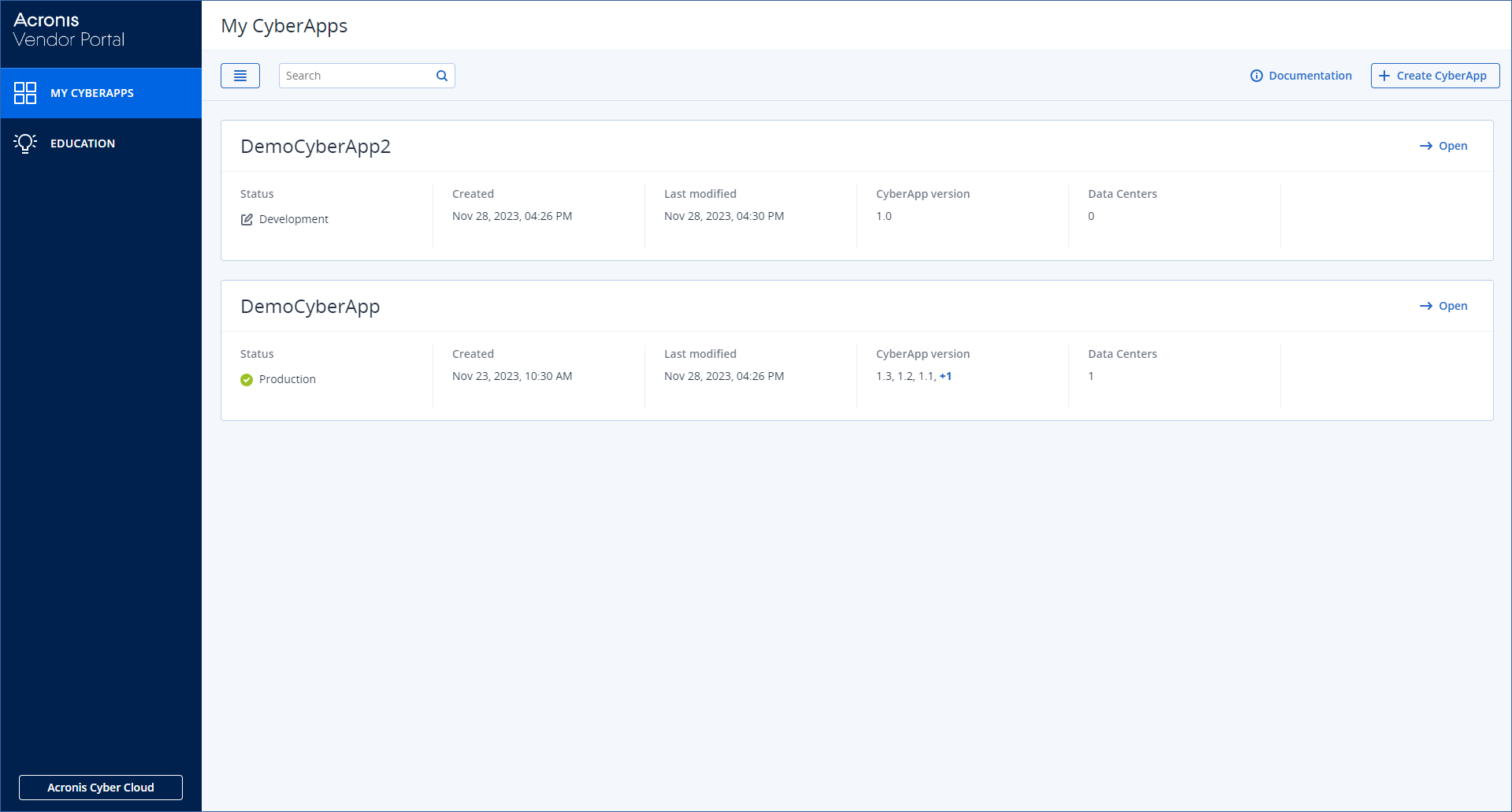Managing CyberApps
Vendor Portal developers can create and manage multiple CyberApps.
There are generally 3 approaches to CyberApp management:
An ISV with a single product creates a single CyberApp, and updates the CyberApp Descriptions and CyberApp Versions as their product evolves.
An ISV with several products creates several CyberApp - one for each product - and updates the CyberApp Descriptions and CyberApp Versions as each product evolves.
An ISV creates a new CyberApp for each release of their product(s).
Note
We recommend the first and second approach over the third, but the only limitation is that you can create a maximum of 20 CyberApps.
With multiple CyberApps, your organization can:
Offer independent variations of a single cloud service.
Make available multiple, independent cloud services.
Deploy a separate CyberApp for each new major release of a cloud service.
Offer industry- or market-specific functionality packs.
Note

CyberApp deployment steps
There are 4 steps to building and deploying a CyberApp in Vendor Portal: